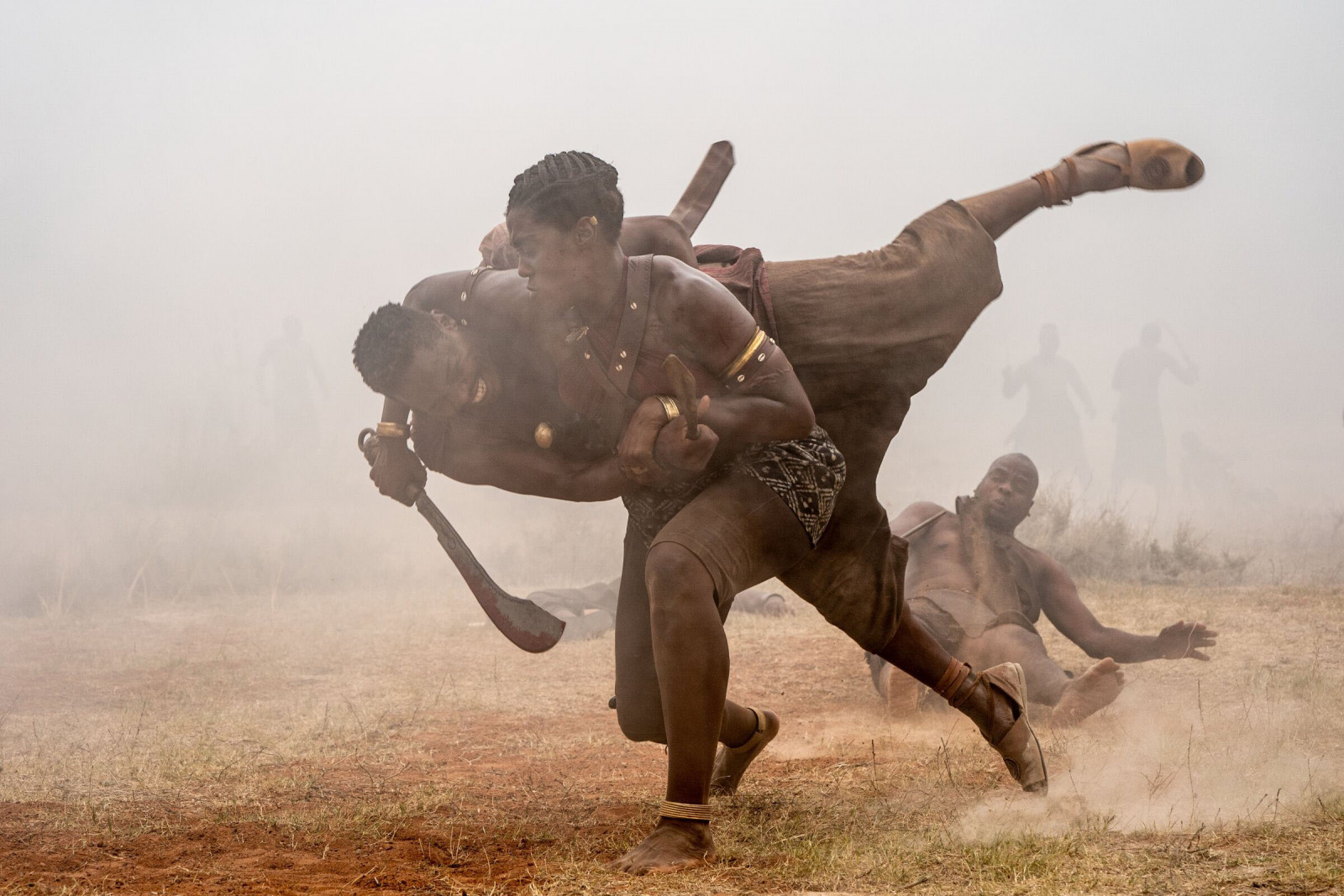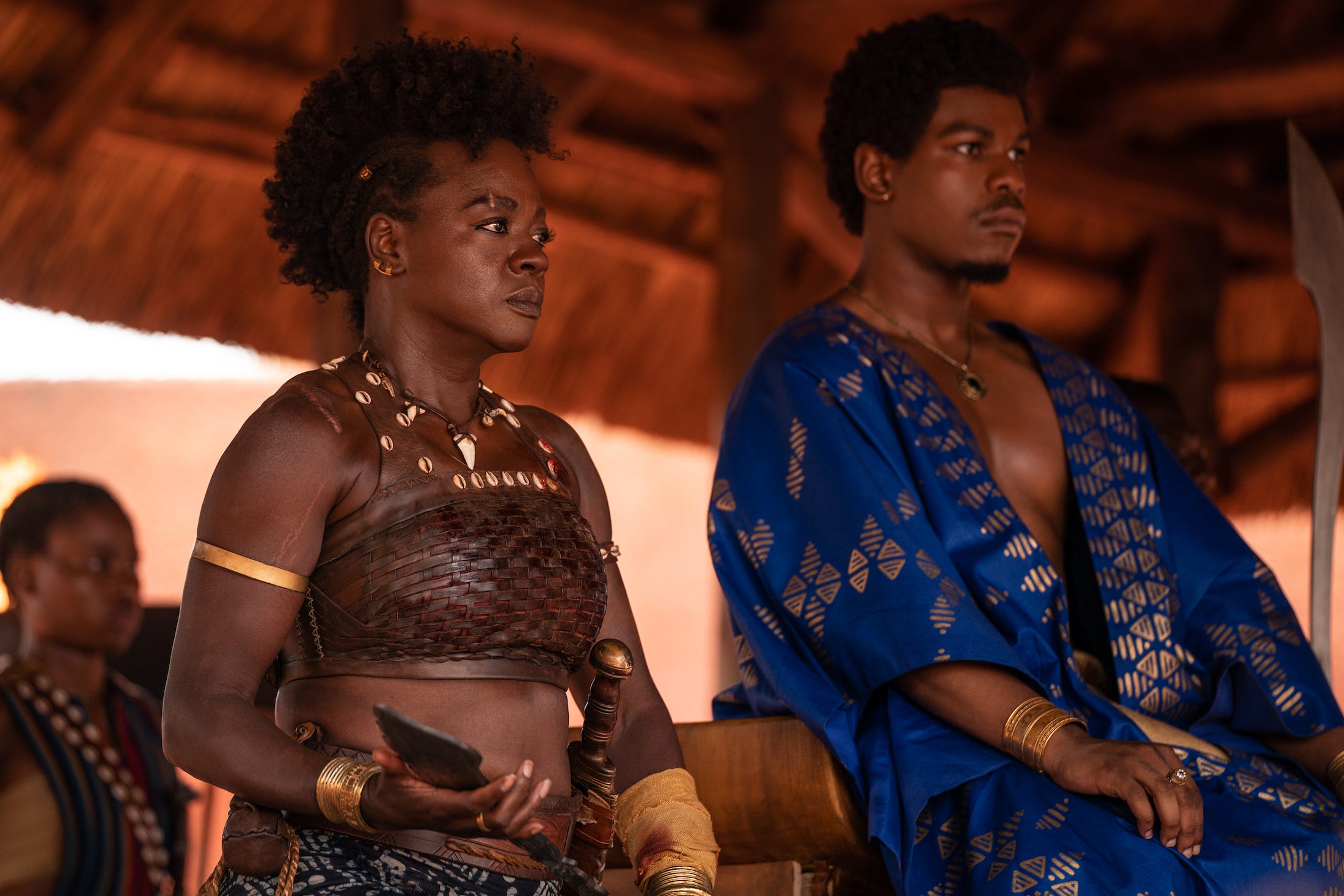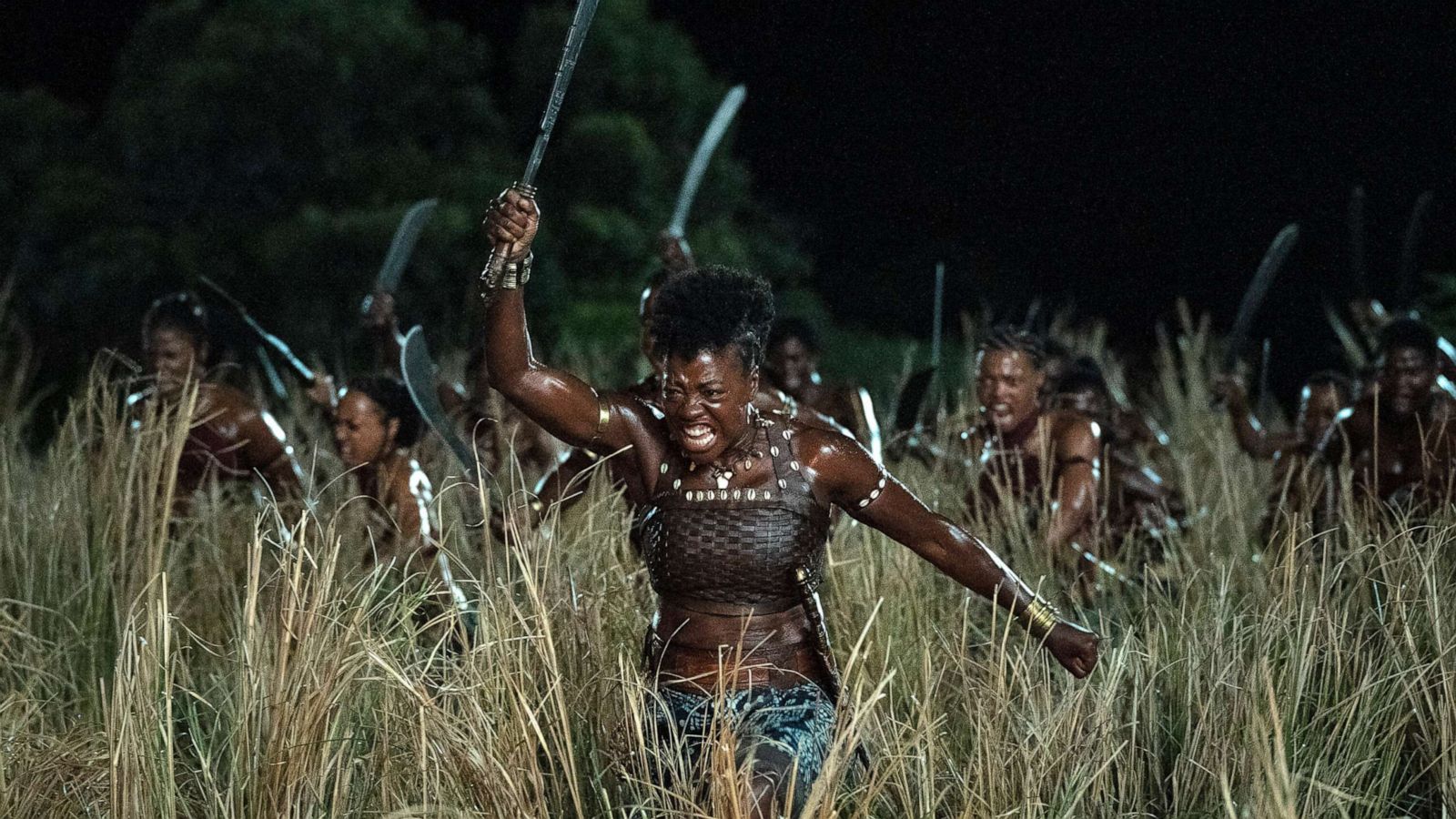Four years ago, the Marvel Cinematic Universe introduced us to the marvelous world of Wakanda in Black Panther. It is a fictional country in East Africa that is secretly the most prosperous in the World. Hidden behind optical shields which protect it from prying eyes from outside, it is a safe haven for its residents. Apart from the shields, Wakandans are protected by the all-female army called Dora Milaje. Not only did the film get raving reviews from fans and critics alike, it even got an Academy Award for Best Picture nomination in 2019. One of my favorite aspects of Black Panther is the representation! In fact, it’s a special film for Incluvie, because the first ever article was about it! Now, all fans universally agree that the Dora Milaje is one of the coolest armies to be seen on screen. Led by Okoye (Danai Gurira), the band of African women can tear down any opposition they face. Well, guess what? There was once a real-life Dora Milaje in 1800s Africa, specifically, in the kingdom of Dahomey. Known as Agojie, they were fierce warriors who were majorly in charge of protecting Dahomey from external threats. History lessons don’t tell their stories, but that will hopefully no longer be the case. Directed by Gina Prince-Bythewood, The Woman King is here to remind the world of the fiercest all-female army that it had conveniently forgotten about.

The Agojie are Dangerous but Provide a Safe Space for Women
Dahomey’s enemy, the Oyo Empire has joined forces with the Mahi tribe, and together, they raid Dahomey villages and sell the captives to European slavers. Under their new king Ghezo (John Boyega), Dahomey is fighting back with the attacks primarily orchestrated and executed by the Agojie. Within five minutes of the start of The Woman King, we meet Nanisca (Viola Davis), the current leader of the Agojie in the film. They’re in a Mahi village, where the Dahomey people are being held captive. The Agojie ruthlessly lay siege on the village and rescue the captives. They appear out of nowhere in the middle of the night, and before the villagers are able to properly react, the siege is practically over. They return to Dahomey with the prisoners and the Mahi women too. When they enter the kingdom the next morning, in broad daylight, you see them in their full glory for the first time. Every woman is muscular, carrying heavy spears and swords, and wearing armlets, rings, and belts. Their wardrobes are practical, and they’re dressed in clothes that allow extensive body movement necessary for physical maneuvers during combat. The Agojie marching in unison is a fearful sight for their enemies; a welcome sight for the Dahomey people but an awe-inspiring sight for everyone. Their bodies are like easels for battle scars, souvenirs from their successful daring conquests. And when they shout their battle cry together as a unit, you’re filled with admiration for them. A little trivia: All the stunts are performed by the actresses themselves, and they went through rigorous training to look like they could actually topple two-hundred-and-fifty-pound men. At over fifty years of age, Viola Davis underwent this tremendous transformation and it’s safe to say, she isn’t done paving the way for others by being an inspiration!
While the Agojie march in through the gates of Dahomey, in another corner of the kingdom, a young woman Nawi (Thuso Mbedu) is presented to a much older man by her father. She is supposed to marry him, but she shoves him away when he is disrespectful to her and slaps her. Angered at her behaviour, her father drops her off at the castle, where the Agojie live. They’re greeted at the gates by Izogie (Lashana Lynch) who takes her in and gives her a tour of the premises. We see hundreds of women training, healing, working, and basically, flourishing in a safe space made exclusively for women. Nanisca addresses all the newcomers and the Mahi female prisoners. She tells the Mahi women that they shall not be punished for the sins of their men, and they can leave if they don’t want to join the Agojie. The Agojie women do not participate in romantic or sexual relationships with others and they do not bear children. But, they’re treated with respect, paid for their work, and most importantly, their opinions are heard. “No tribe or Kingdom in all of Africa shares this privilege”, says Nanisca. Despite being stern, Nanisca is kind and welcoming to all the women. You feel comforted by her presence, even when she is rebuking you. But, her strictness is not to be taken lightly. Her fierceness as a warrior translates into fierceness as a leader and teacher. She understands what is at stake and thus, doesn’t entertain any kind of indiscipline.

A Topically Relevant Coming-of-Age Story
Now, even though the trailer for The Woman King focuses on Nanisca, she isn’t narratively the central character. The story closely follows, Nawi, as she adjusts to life as an Agojie trainee, develops a notably special bond with Izogie, and has ego clashes with Nanisca due to her free-spirited nature. Nawi bands with her peers to play pranks on the instructors, openly flouts tradition by flirting with the members of the male army, and even insults Nanisca to her face. But just like in most coming-of-age stories, she’s soon exposed to brutal truths of life outside the palace. Nawi still stays somewhat naïve, choosing to play the hero during a particularly dangerous exchange with the Oyo warriors, and receiving a further scolding from Nanisca. Soon after, she meets a European slaver Malik (Jordan Bolger), who informs her that he isn’t here to participate in the slave trade. His mother used to be a member of the Agojie, and he is there to visit Dahomey because that was his mother’s dying wish. He insists that they spend time alone, and despite orders from Nanisca to not mingle with men, Nawi humours him. Their first rendezvous goes well, but she isn’t able to spend more time with him because reality catches up with her. She joins her Agojie comrades in war against the Oyo Kingdom, days after learning a difficult truth about herself, and then goes through harrowing experiences that rob her of her innocence.
The Woman King follows the traditional narrative structure of coming-of-age films; introducing, a spirited newcomer who refuses to follow rules, in order to, express her individuality, and openly fights tradition because she believes she knows best. She even finds a romantic interest who makes her question the strict rules more than she already did. But soon after, life catches up with her and teaches her valuable lessons through, heartbreaking events that would force anyone to grow up faster than they would have otherwise. This works within the framework of the film because Nawi represents the woman who is rebellious by nature, the woman who couldn’t afford to be silent as that would mean being married off to cruel partners by her father, the woman who fights tradition because she doesn’t quite understand her place in the world. Thuso Mbedu, in an appearance on The Breakfast Club Podcast, said that she had spent most of her life, “apologizing for existing” and that playing Nawi gave her a sense of belonging because she was able to exist as a character who wasn’t afraid to be herself. It also grounded the narrative for, Thuso because through playing Nawi, she connected to her roots on screen. By portraying a character, who comes of age in the film and learns to understand the true necessity of the rules and traditions, she is asked to live by; I feel like, Thuso is able to convey the importance of knowing your roots. Many African Americans don’t know their lineage, and Thuso believes it is necessary for everyone to learn about it because the context helps them gain self-respect, and also creates a sense of belonging. So not only does the coming-of-age arc give us a central character to be invested in and root for, but it also conveys a hidden message from behind the camera.

Humanized Heroes and Strong Supporting Characters
Nanisca and Nawi may be the co-protagonists of the film, but The Woman King has quite a few compelling and underwhelming supporting characters as well. Firstly, there is Izogie. She is sort of a personal mentor to Nawi right from the start, and a lot of Nawi’s character development happens due to lessons she learns from Izogie. They share a powerful bond that eventually triggers the climactic transformation of Nawi from a rebellious rookie to a confident warrior. Izogie is an inspiration for the whole troop, as she stands her ground even against the strongest male opponents. She is next in line to become commander of the Agojie. Secondly, there is Amenza (Sheila Atim). She is Nanisca’s best friend and confidante. Nanisca was once captured by the Oyo when she was a rookie herself, and Amenza is the only person who knows the harrowing ordeal Nanisca went through. They’ve been there for each other through thick and thin and through them, we’re introduced to the depth of sisterhood that exists within the members of the Agojie. Another important supporting character is King Ghezo (John Boyega). He is a traditionalist who is a staunch supporter of the Agojie and is looking to reinstate the position of woman king which had been abandoned by some of his predecessors. But, he’s quite a complex character, actually. He himself participates in slave trading with Europeans while fighting with the Oyo, for abducting Dahomey people and selling them to Europeans. Through him, The Woman King presents the hypocritical nature of the self-righteous medieval rulers.
The protagonists and the supporting characters may have their individual stories, but the most essential narrative thread of the film is that of the Agojie as a whole. They are relentless in their pursuit of justice, and each of them will go to Hell and back for her peers. The Woman King is primarily the story of how this army existed so many years ago, and yet, we know nothing about it. So, it focuses on the army’s story as a whole, only choosing to tell the story of Nanisca or Nawi to further the plot. Moreover, along with showing off how fearless and powerful the warriors were, the film humanizes them. For this, it focuses on specific narratives, like those of Izogie or Nanisca. They’re not superhumans. They are also people and have their fair share of trauma. As a woman in a misogynist society that literally commodified women, they already had enough to contend with. And on top of that, they were soldiers. So, we can safely assume they dealt with PTSD as well. Nanisca has a very traumatic backstory, and that story is told with utmost care. The nuanced characterization of their leader grounds the Agojie as a whole. It gives us a better perspective than the hero-worship angle with which Black Panther approached the Dora Milaje’s story. In fact, they didn’t really have a story, and I hope that the next film in the franchise, which releases in a week, gives them one.

The Woman King is a Milestone Film
This is where I tell you, that you have seen this film a million times before. Classics like Braveheart and Troy all tell the story of brave leaders and fearful armies. And they’re all engaging, with multiple story threads, and extended scenes of warfare with stunning choreography of action. The heroes all look frightening with their bulked-up physiques and their skills with weapons. The emotional quotients are high, making viewers root for a side. The audience cheers the army on, cries when they incur a loss, claps when they win, and excitedly follows their every move. All of that is true for, The Woman King too. But, which of them was led by a black woman, and featured an army entirely comprised of black women? None! And that is one of my favourite aspects of The Woman King. It is narratively traditional, following in the footsteps of the many medieval war classics that have come before. This way, it draws attention to the central message. Black women are often portrayed as caregivers in period pieces like The Help or damsels in distress like Django Unchained. But, the fact of the matter is, they’re just as fierce as any other people, and history’s male-centric whitewashed perspective can no longer keep that hidden. The major difference from other war classics; apart from the women-of-colour aspect is the humanizing of the heroes. This is where the female gaze comes in. Hyper-masculine heroes come without weaknesses, but real people have flaws and trauma. A female gaze chooses to say, that masculinity isn’t lost if weakness exists, and this feminine perspective makes the Agojie real. That, and the fact, that they were indeed real.
The black empowerment angle isn’t for every member of the audience. The director, an African American woman herself, has directed The Woman King through her perspective, of course, and that’s why it’s not a film about black people made for white people. But, that’s not a reason for people of other races to not like the film. It’s a big blockbuster movie with fast-paced action, complex characters, and an interesting story. Whether or not, you understand the significance of the film in today’s socio-political context, you will be forced to root for the Agojie, cheer for them, clap for them, laugh with them, cry with them, and shout out their war cry with them. Viola Davis, on a podcast appearance for The Breakfast Club, said that “image and message, sometimes, is more important than execution” and that is a message for the young African Americans in the audience. She and the crew, hope that the black youth of America will feel empowered and realize the significance of their heritage.

Controversy Surrounding Historical Accuracy
Like with any historical film, viewers were sceptical about the truth in the narrative of The Woman King. But, except for 12 Years a Slave, no film in the 21st Century depicts slavery accurately. And, while The Woman King might have inaccuracies, that is the case with all historical films. Creative liberty is something that is afforded to every creator. So, the strict scrutiny of the film to the point of the Twitter hashtag #boycottwomanking seems undeserved. Director, Gina Prince-Bythewood spoke out against the unfair branding of The Woman King as “revisionist history” and I think, today’s sensationalism is what’s causing such a reaction. The story isn’t everyone’s to tell, but everyone has an opinion about how it’s told and that is honestly exhausting. Also, a little research does confirm what Gina claims.
Spoiler Alert for this paragraph! The end of The Woman King shows King Ghezo giving an impassioned speech about the slave trade, and choosing to abolish it. Now, Ghezo was a staunch supporter of the slave trade, but he did agree to stop selling slaves through a treaty with the British in 1852. The truth is, this happened due to pressure from Britain, and not due to self-realization or prompting from the leader of the Agojie. So, that’s some creative liberty taken by the director, but in her defence, Ghezo is portrayed as a shady individual, interested in doing what makes his Kingdom the richest.
It Should Be Seen In Theaters
The Woman King is an action-heavy film, set against the picturesque backdrop of Africa. It is a visual treat and I believe, it’s best enjoyed in the theaters. The sense of community is also a major factor in its enjoyment in movie theaters. Shouting out the war cry of the Agojie as a whole is an experience everyone should have. And, most importantly, if it underperforms at the box office, the next such narrative, featuring unconventional roles for women of colour will be that much more difficult to make. It will set a precedent that Hollywood doesn’t enjoy this kind of story. But, I’m happy to say that The Woman King has been largely successful and I hope, this speeds up progress as far as representation in Hollywood is concerned. Viola Davis fought for the rights of this film for seven years, and Gina Prince-Bythewood fought with her heart and soul to make sure her vision was conveyed as it is. She wanted to show that these aren’t just kick-ass women, but real human beings as well. She wanted to create a layered narrative led by black women, and thankfully, the studio didn’t interfere much. If nothing else, The Woman King should be watched in theaters just to honour the team’s efforts.

Comments